Production Line-N350
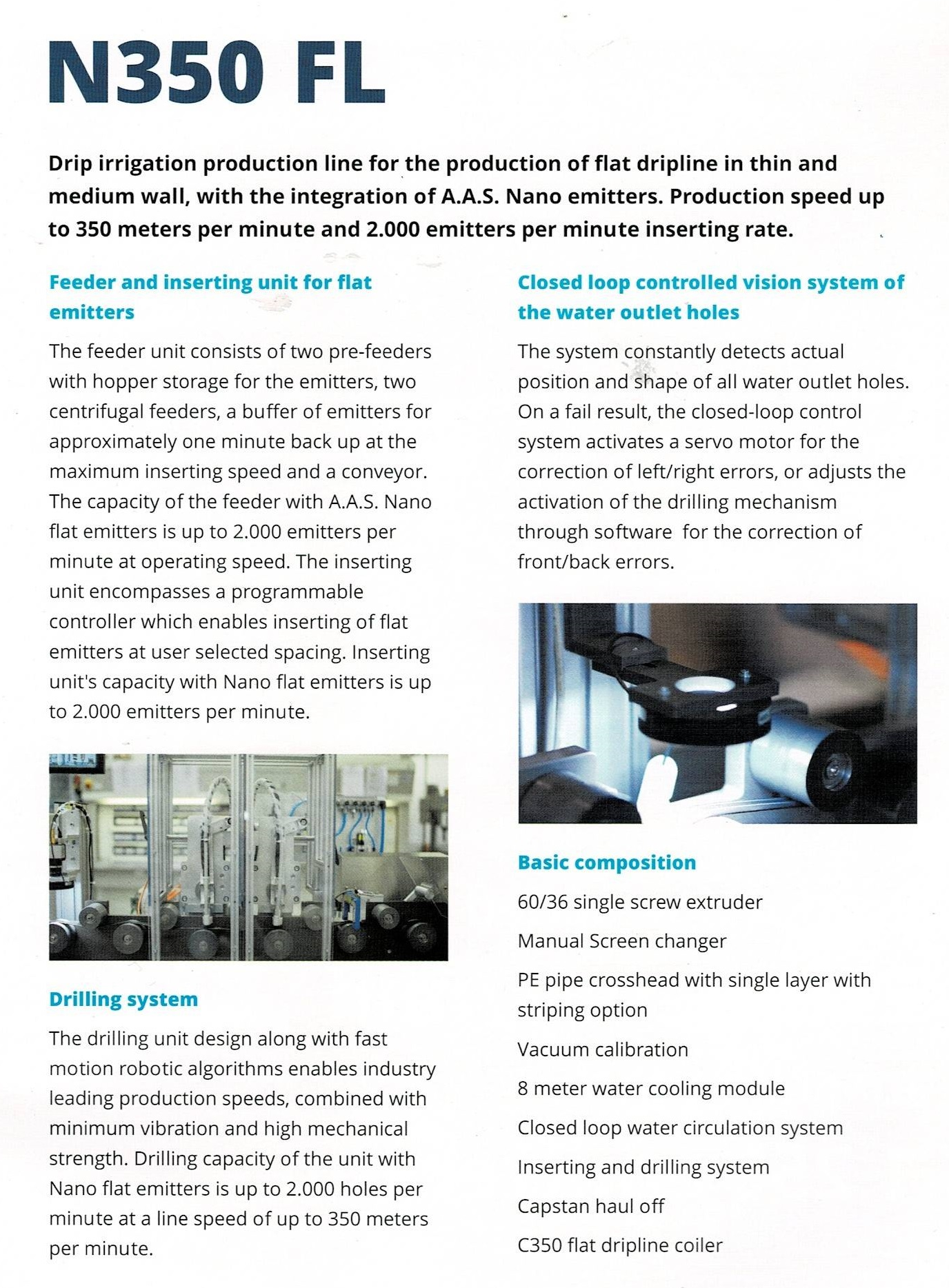
Production Line-T250
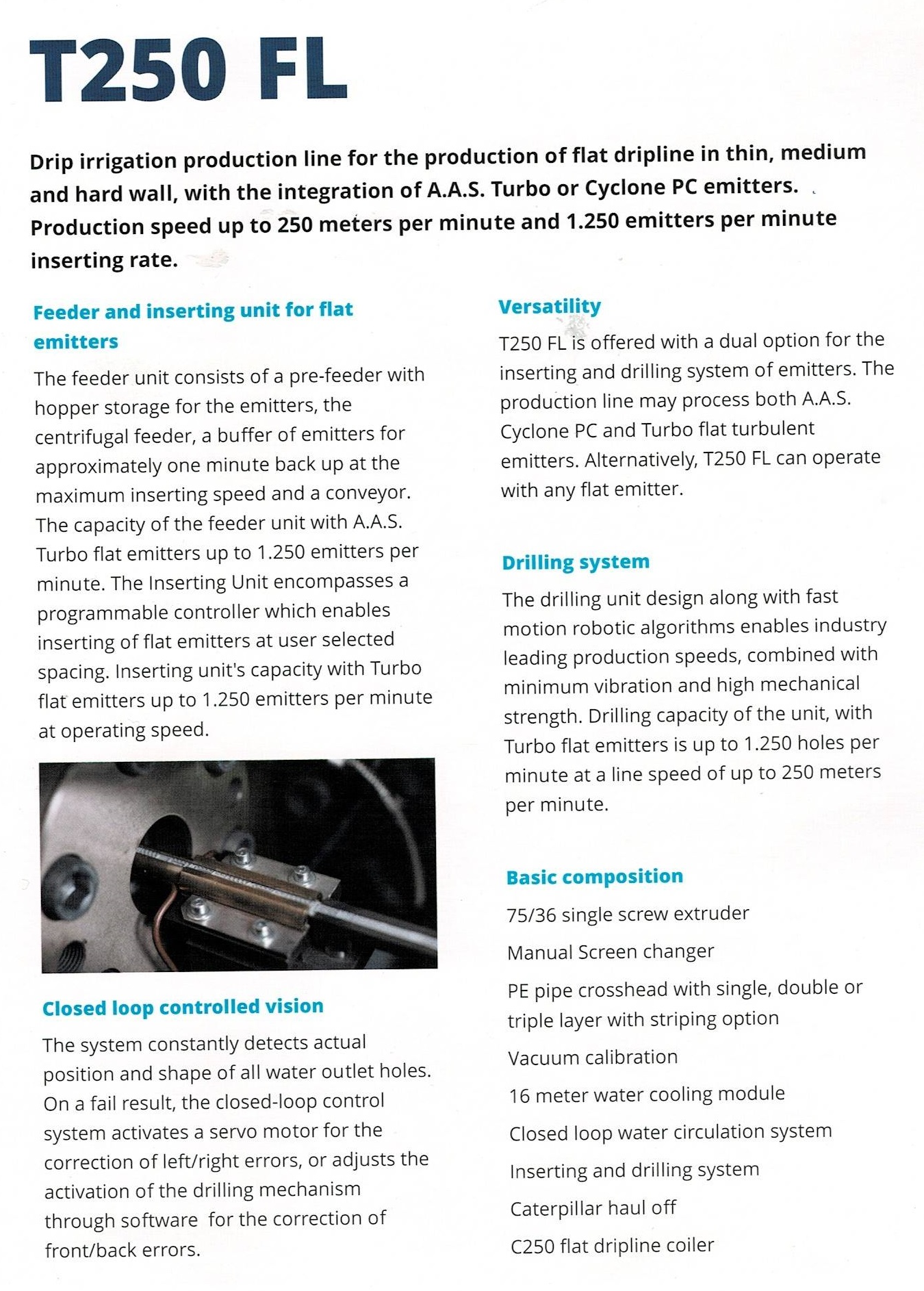
Production Line-E200
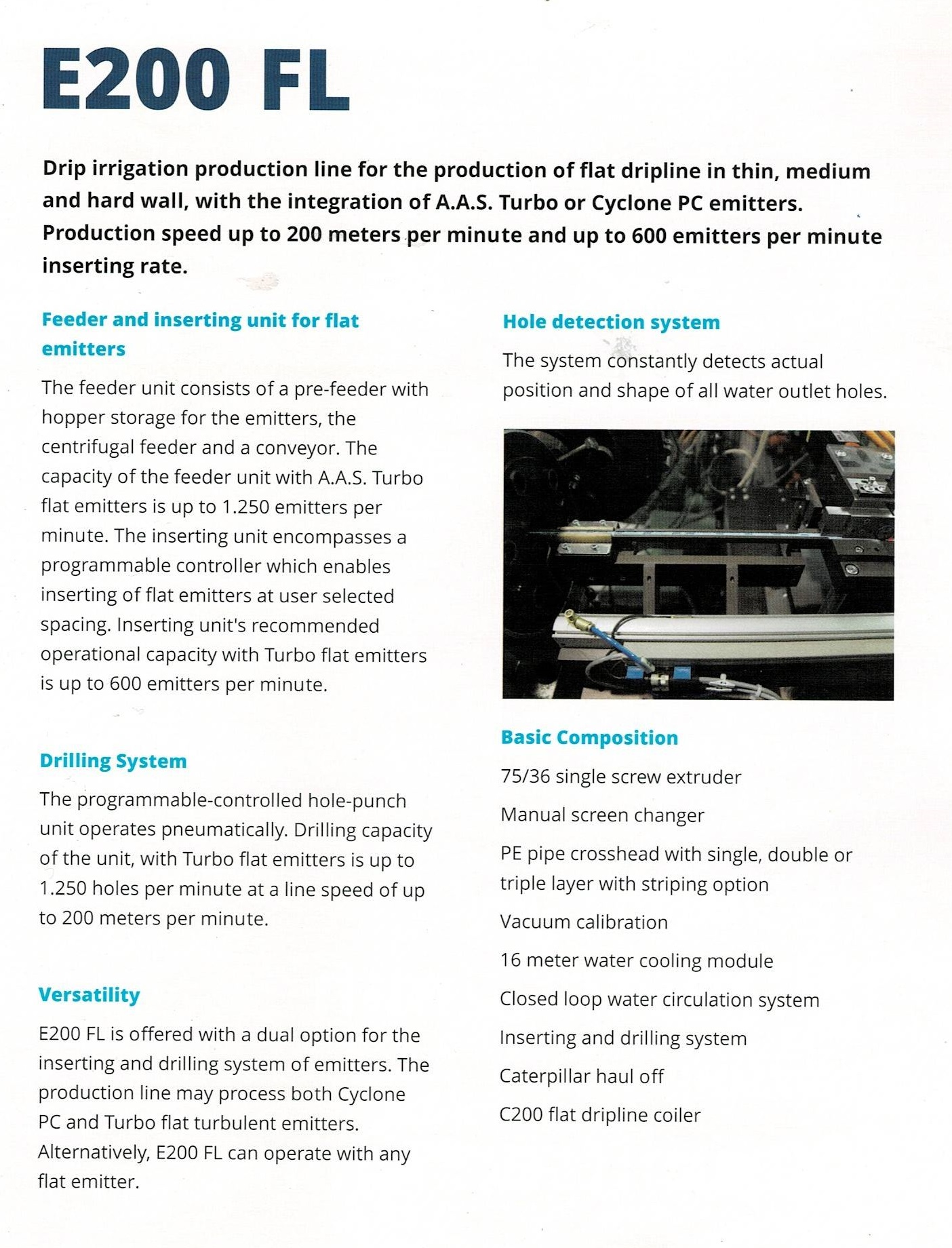
Online Pc Emitter Aquarius

Inline Round Pc Emitter Triton
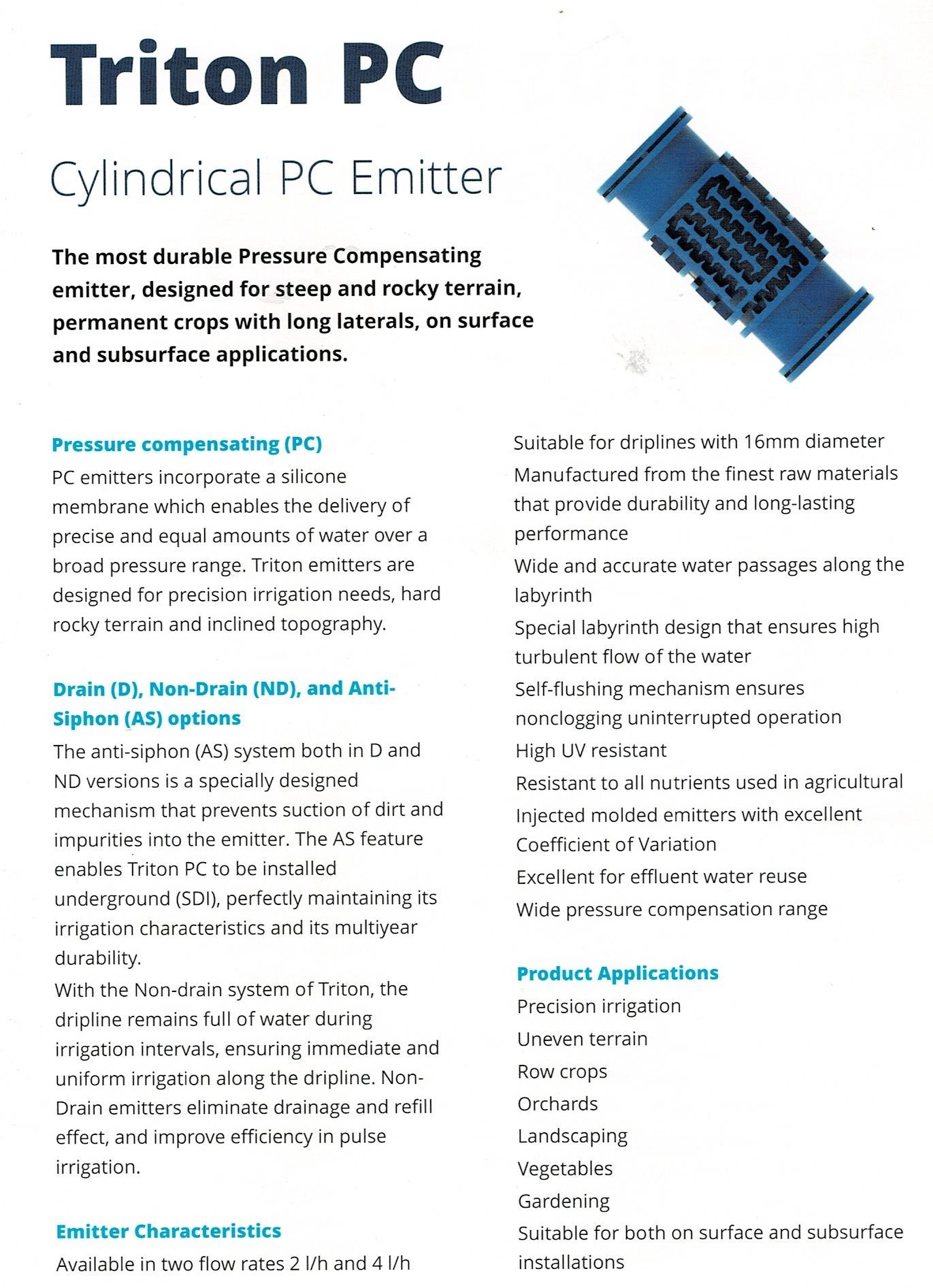
Inline Flat Pc Emitter Cyclone

Flat Emitter Turboflat
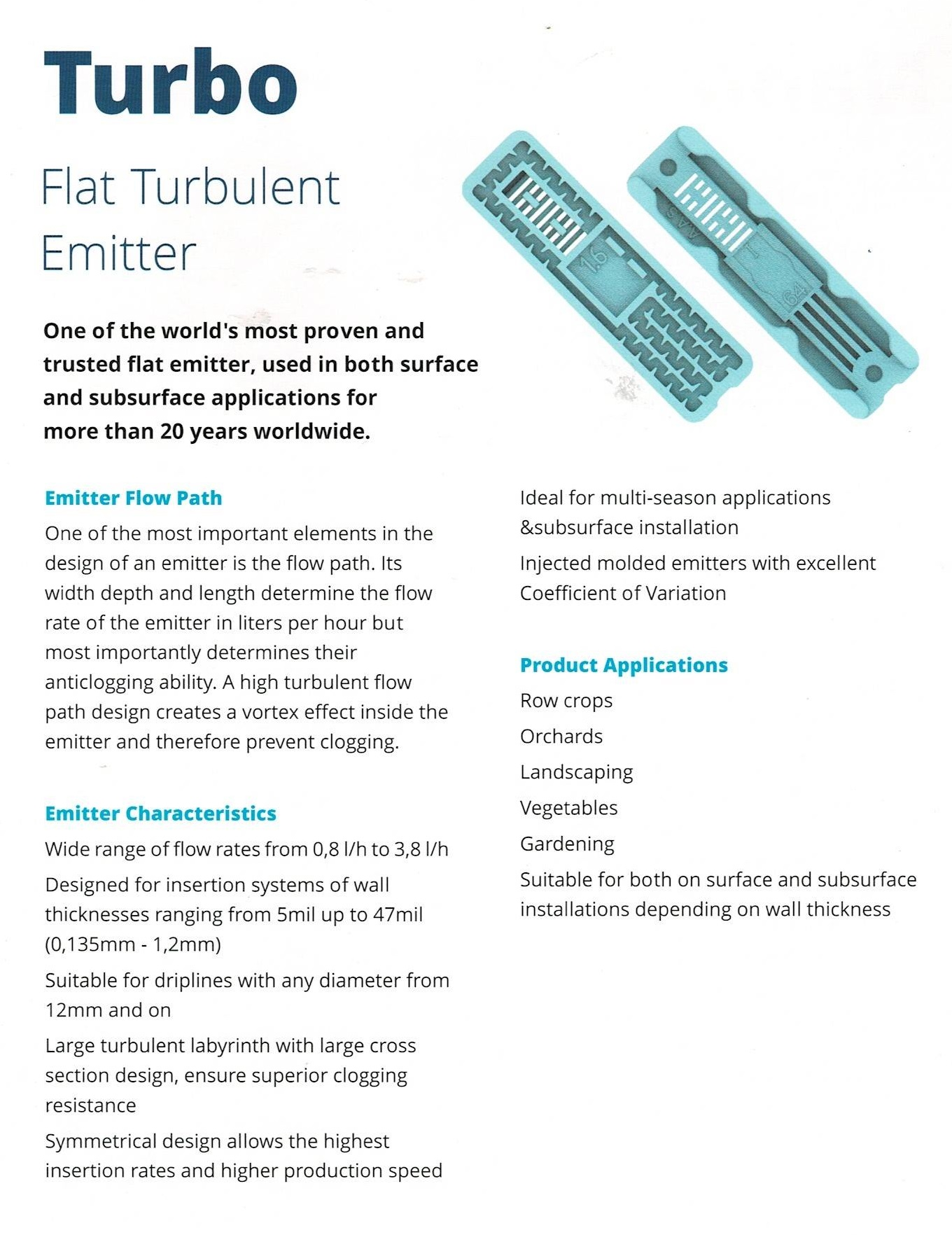
Flat Nano Emitter
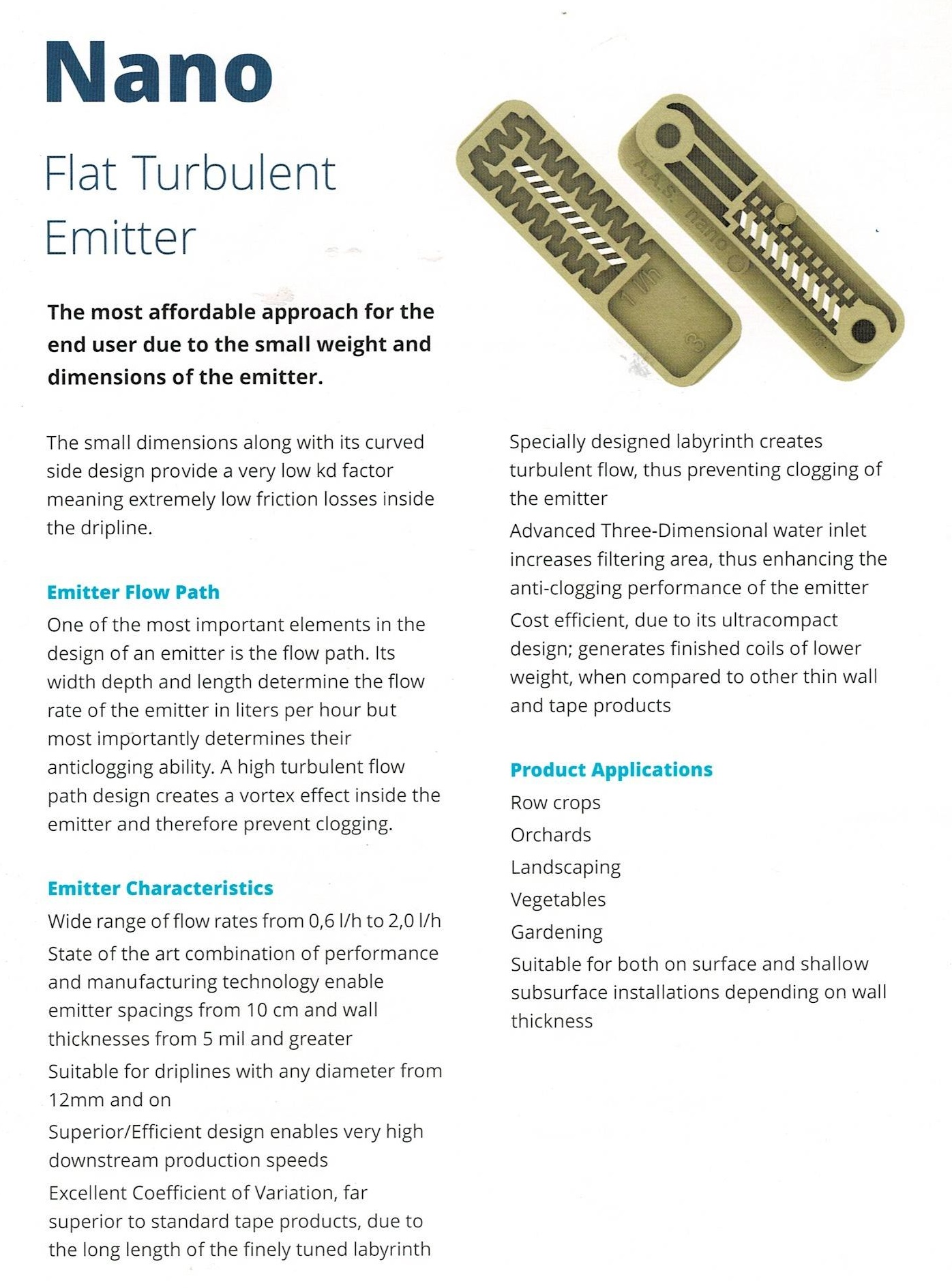
Driplines Of Triton


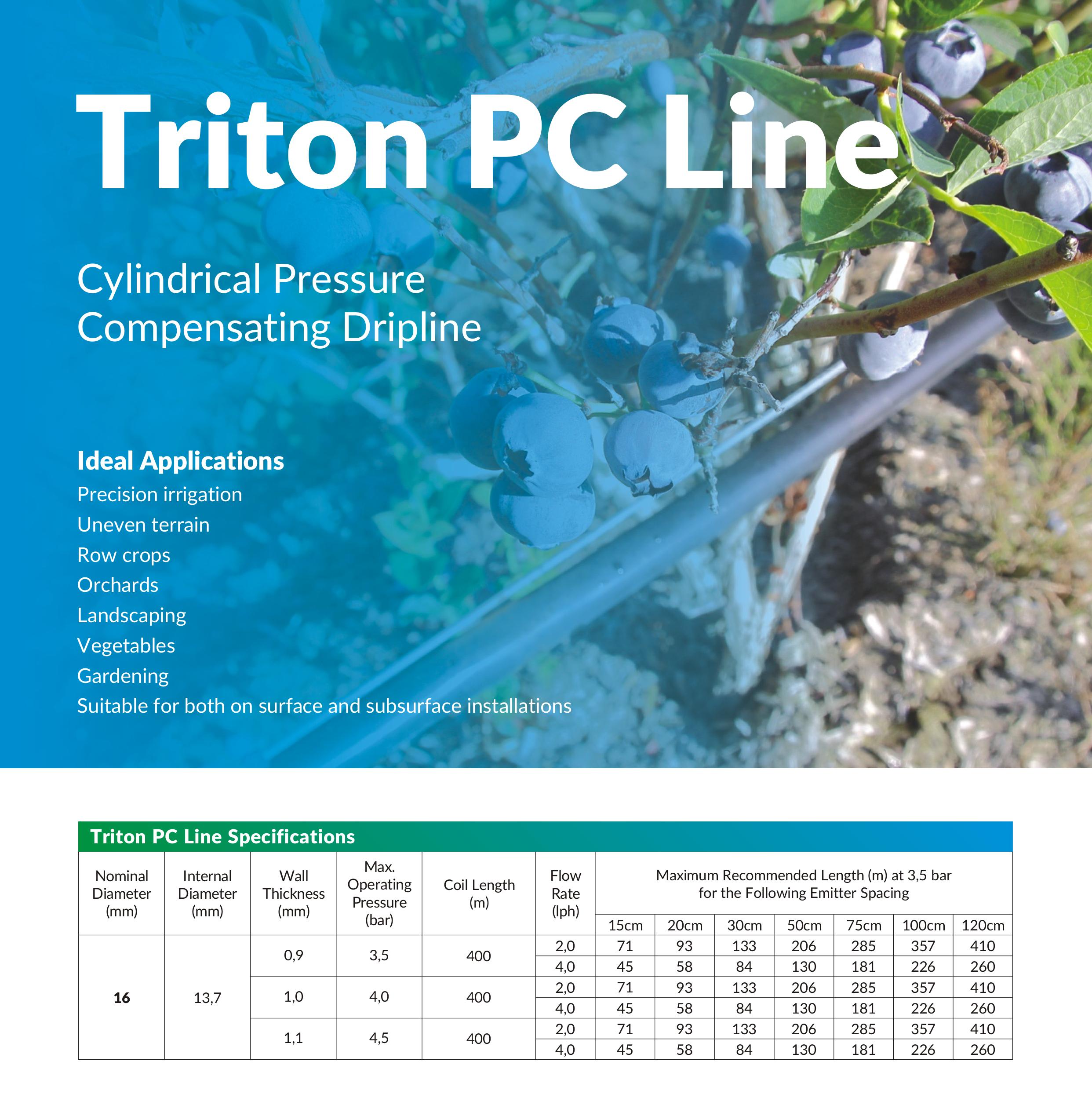
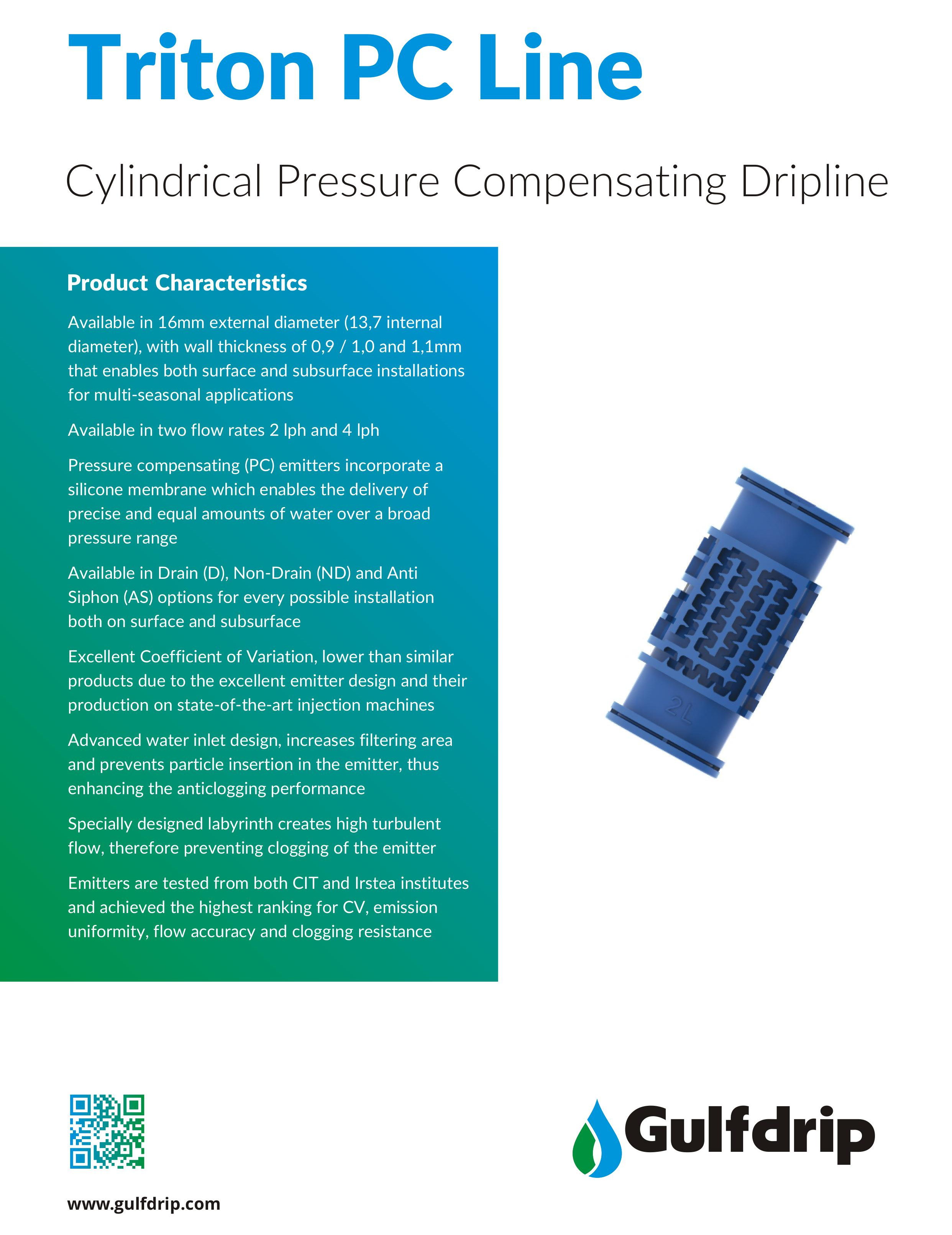
Cyclone Driplines

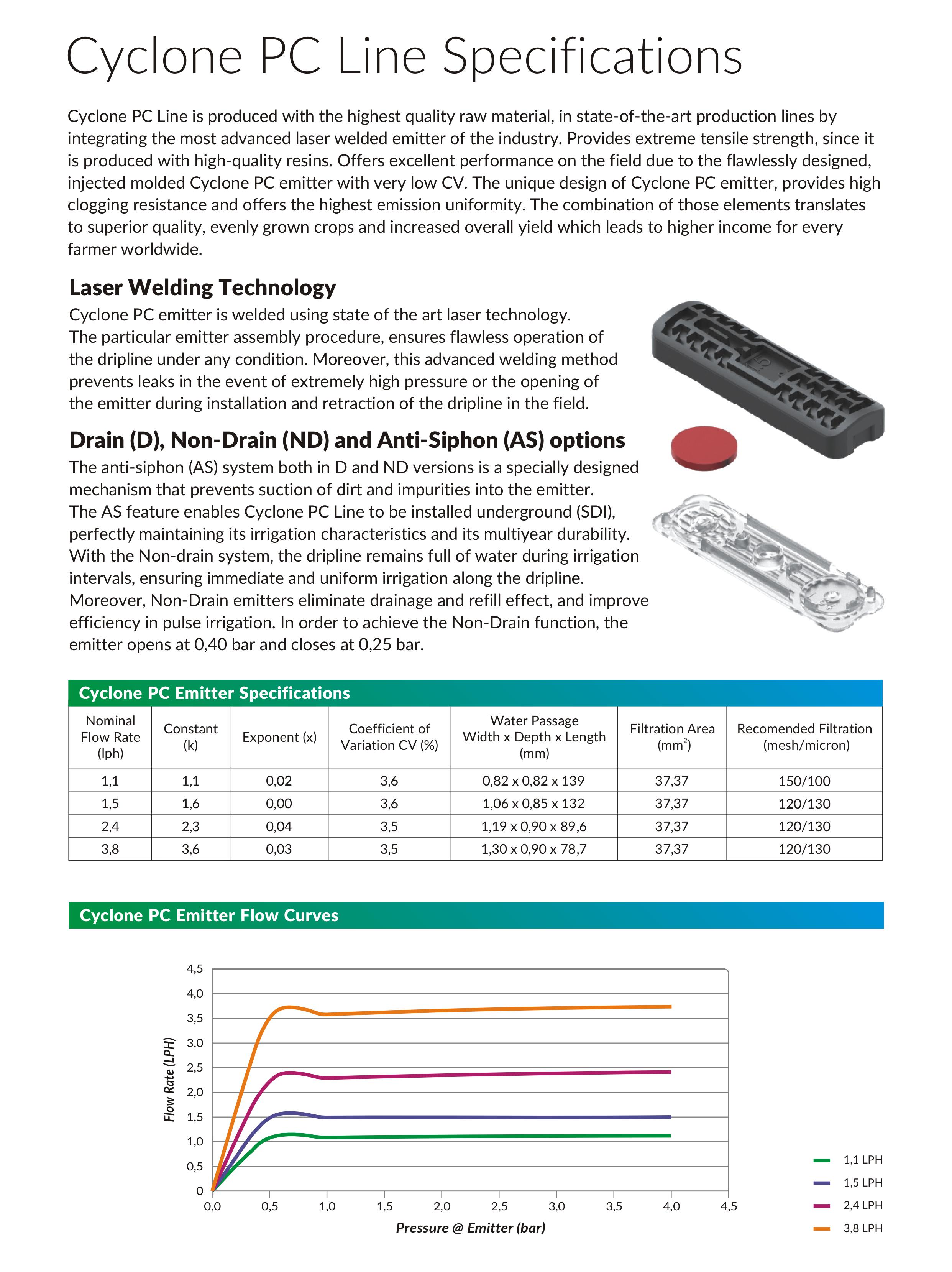
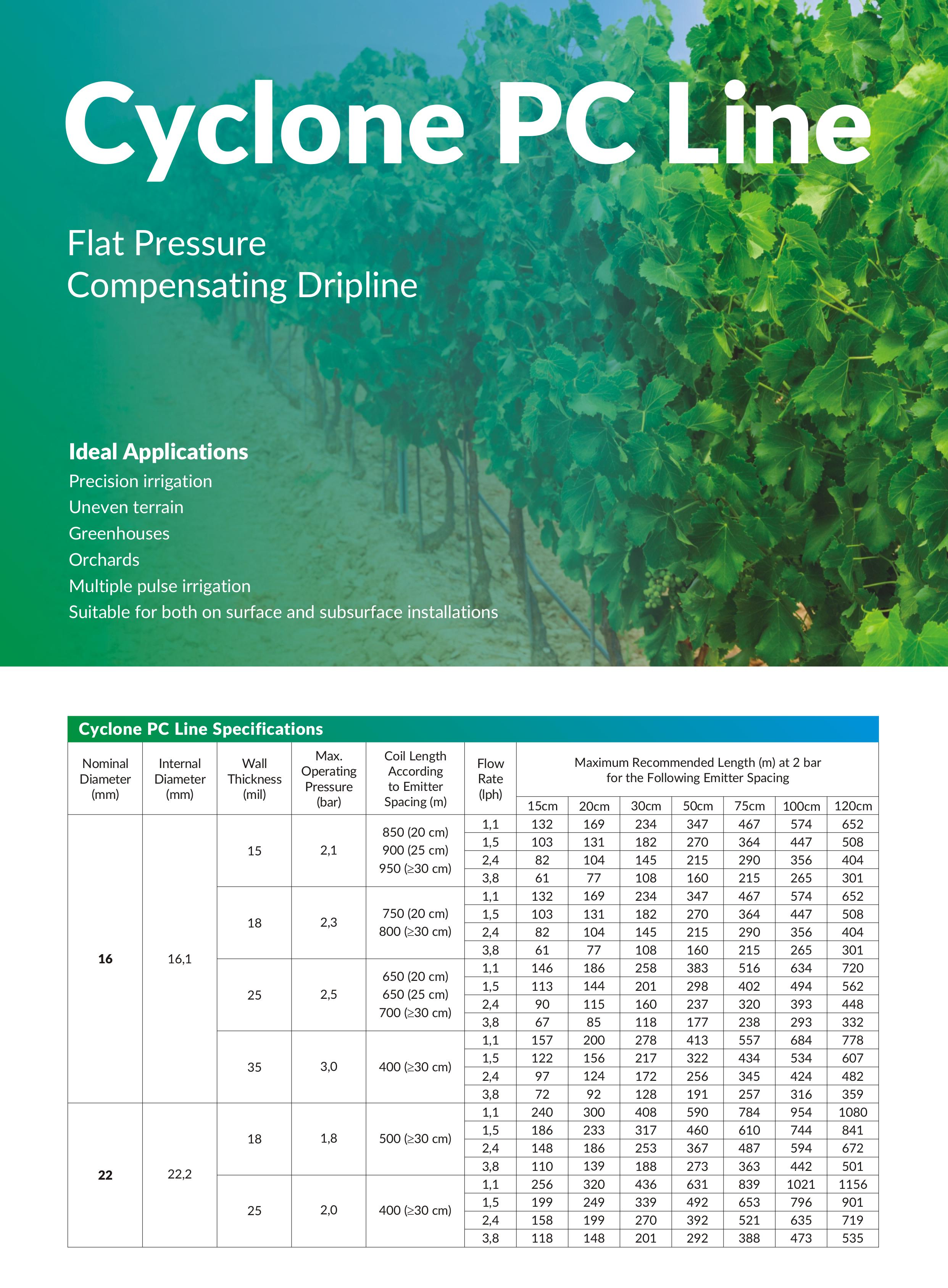

Non ISI Dripline Nano




Turbo Flat Dripline

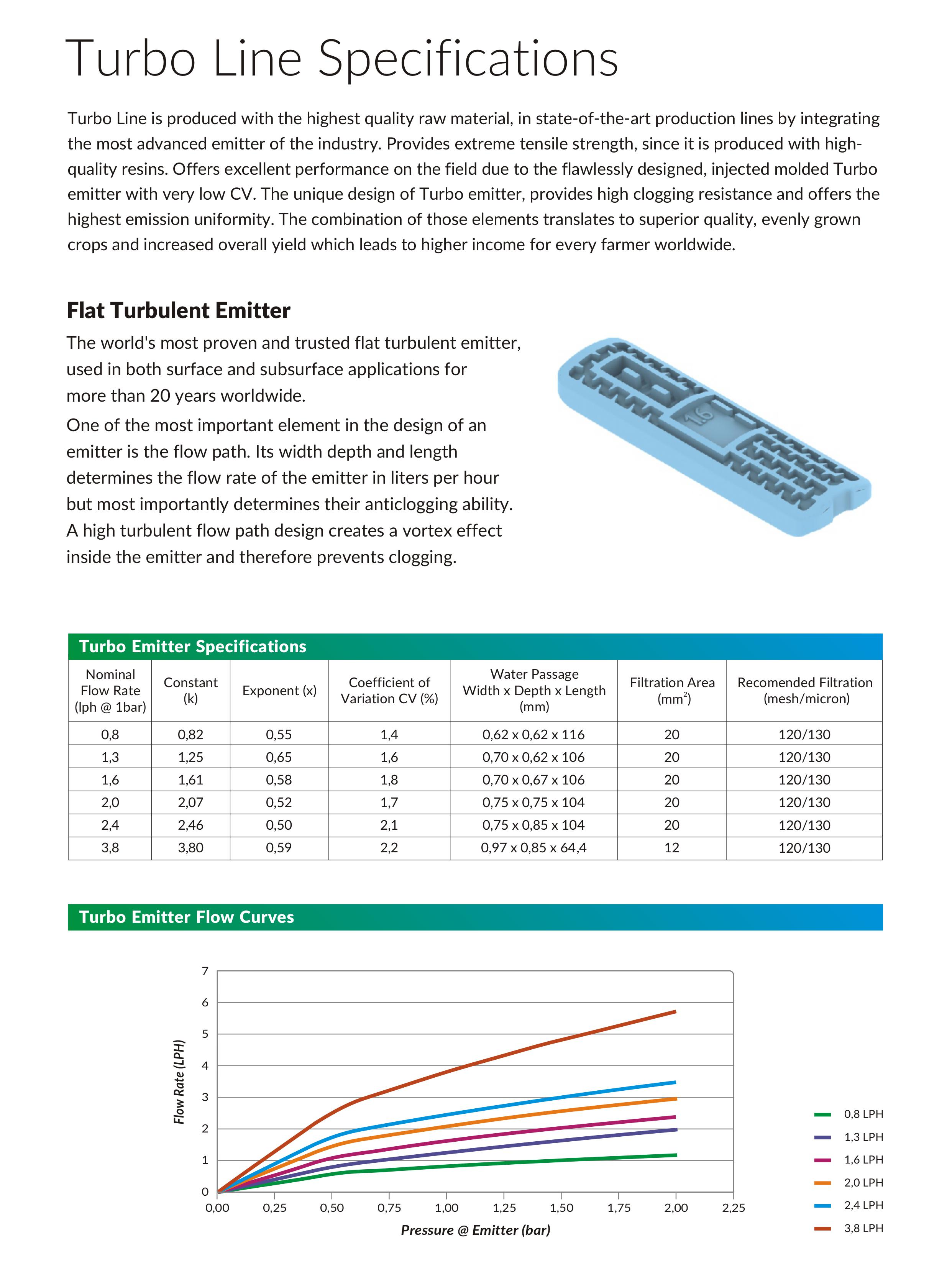

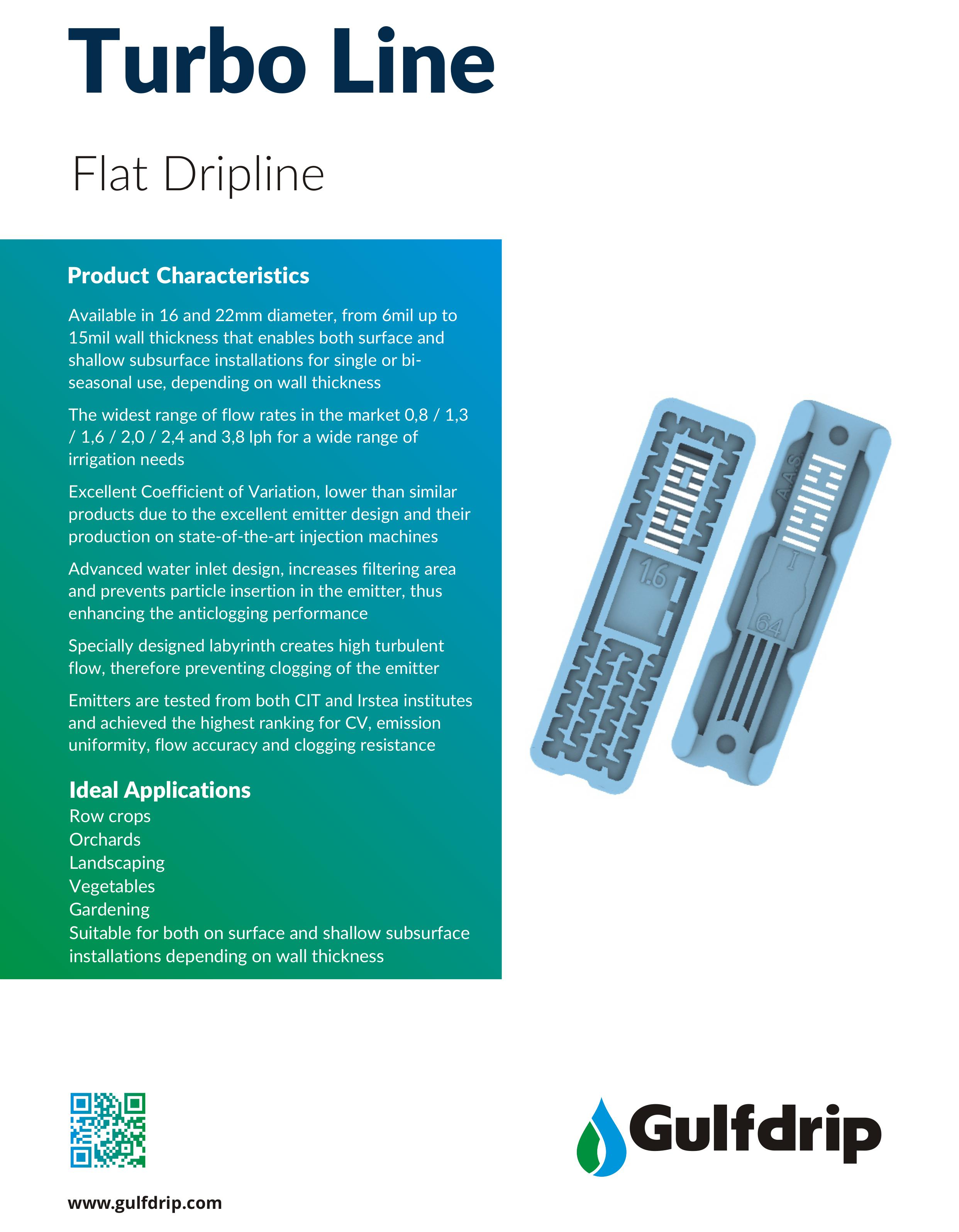
DUAL CAPABILITY DRIPPER INSERTING SYSTEM FOR NPC / PC DRIPPERS
Combo Dripper inserting system Line
Dual Capability Dripper Inserting System For NPC / PC Drippers
- Non Pressure Compensating Dripper - FLAT
- The NPC Dripper TURBO FLAT is made from Very special Polymer is now available in 6 flow rates ranging from 0.8 LPH, 1.3 LPH, 1.6 LPH, 2.0 LPH, 2.4 LPH & 3.8 LPH. These drippers are Clog Resistant drippers duly tested at California Institute of Water Technology. The flexible dripper helps easy sticking to the pipe and is suitable for 6 mil to 36 mil ( 0.15 mm to 0.9mm ).
- Pressure Compensating Dripper – FLAT
- The PC dripper CYCLONE is available in PC Drain , PC Anti Syphon & PC Non Drain features. These drippers are most suitable for Undulated Terrain , Subsurface Irrigation and Precision Farming in Greenhouses. This dripper is available in following flow rates 1.1 lph , 1.5 lph , 2.4 lph & 3.8 lph.
- Combo Dripper Inserting System for NPC & PC dripper : This line has got capability to switch over from PC to NPC and back in a changeover time of 45 minutes. With minimal changeover of the parts one can shift from NPC to PC and back. We offer services to have changeover for the two type of drippers.
